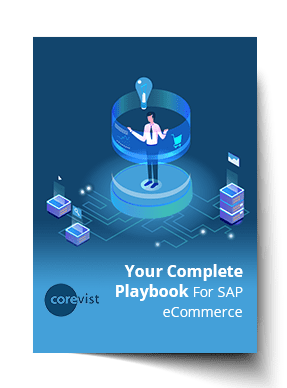Share
Author
George Anderson
Share
We’re hearing more and more about SAP Upscale Commerce, particularly after SAP featured the solution in several presentations during SAPPHIRE Now 2021. For manufacturers who are just starting to evaluate B2B eCommerce, a question arises: Is SAP Upscale Commerce a good fit for my use case?
As you might expect … it depends. 😊
In this post, we’ll examine SAP Upscale Commerce from a B2B standpoint. We’ll also help you figure out if SAP Upscale Commerce fits the needs of the segment(s) you want to reach through eCommerce.
But first off, a definition.
What is SAP Upscale Commerce?
SAP Upscale Commerce is a SaaS solution for small-to-medium organizations selling directly to consumers. It offers fast, no-code deployment, out-of-the-box personalization driven by AI, one-click mobile apps and many other features. It’s basically perfect for B2C and D2C organizations that 1) don’t need deep ERP integration, and 2) have limited technical resources available.
Here’s another way to look at it: SAP Upscale Commerce is SAP’s answer to the challenge of Shopify. SAP Upscale Commerce empowers smaller retailers to launch personalized commerce experiences with minimal up-front investment and no responsibility for maintaining the technology.
NEW Guide:
Your Complete Playbook for SAP eCommerce
Here are 4 keys to a successful eCommerce channel in an SAP ERP scenario.
Does it make sense in a B2B scenario?
In a previous post, we compared Shopify to the Corevist Platform for B2B. In a nutshell, we found that Shopify didn’t support the functionality that’s essential for manufacturers in a B2B scenario — largely because it doesn’t support deep SAP ERP integration out of the box. Manufacturers face a similar challenge here: While SAP Upscale Commerce does support basic ERP integration, it’s not robust enough for the needs of manufacturers. (More on that in a moment.)
Since SAP Upscale Commerce is intended for direct-to-consumer markets, it may be a workable choice for manufacturers who need a low-code D2C eCommerce solution (particularly in the proof-of-concept phase, when you want to minimize cost and risk).
Of course, selling direct isn’t really a B2B use case for manufacturers. It’s actually a variation on B2C.
So what about true B2B?
The catch: SAP ERP integration for B2B
In these cases (e.g., selling to dealers, distributors or other channel partners), the capabilities of SAP Upscale Commerce may not align with the needs of users (or of your organization). While Upscale Commerce definitely supports integration with S/4HANA and ECC, it’s worth noting what kind of integration this is. As SAP says:
“The integration with SAP S/4HANA or SAP ERP is achieved using SAP Cloud Integration, which handles the replication of master data from the back ends to SAP Upscale Commerce, and also the replication of sales order details from SAP Upscale Commerce to the back ends.”
The key word here is “replication.” That means duplicating everything and synchronizing it periodically.
That’s great for B2C, but not great for B2B.
In B2C scenarios for SMBs (small to medium-sized businesses), replicating data and synchronizing it isn’t a big deal. With lower order volumes and all transactions conforming to the same underlying business logic, there’s not a lot that can go wrong. When problems do arise, the smaller scale makes them easier to deal with.
However, in complex B2B scenarios for large manufacturers, the “replicate and synchronize” model doesn’t work so well. This is why we believe manufacturers whose business depends on SAP ERP should look for alternatives to SAP Upscale Commerce for B2B.
Alternatives to SAP Upscale Commerce in a B2B scenario
Luckily for manufacturers, there are numerous alternatives to SAP Upscale Commerce for B2B. The challenge is finding a solution that meets your unique needs.
As you start evaluating solutions, it’s helpful to frame things around one question: “How much SAP ERP integration do our customers need to buy from us online?” There are only two ways to answer this question.
- We don’t need much integration to SAP ERP. Customers don’t need real-time personalized inventory or pricing. Our transactions are generic and simple (like B2C), with no complex logic determining the final shape of an order.
- We need real-time SAP integration. Customers have personalized prices determined by contracts and material bundling. Customers can get real-time, personalized inventory by calling customer service. Customers are partially or entirely dependent on interaction with sales (or customer service) to ensure their orders are well-formed.
B2B eCommerce platforms divide along these lines. Conventional platforms like Magento, Salesforce and BigCommerce don’t have great answers for real-time integration to SAP. A true “SAP-first” approach is actually a little rare. But that’s the approach we took when we built the Corevist Platform, which includes our 49 prebuilt SAP integration points to support complex B2B transactions.
NEW Guide:
Your Complete Playbook for SAP eCommerce
Here are 4 keys to a successful eCommerce channel in an SAP ERP scenario.










